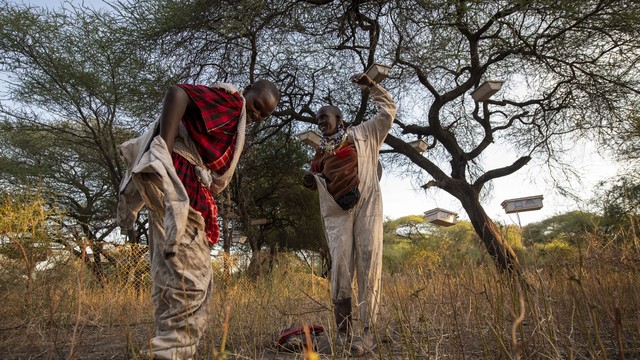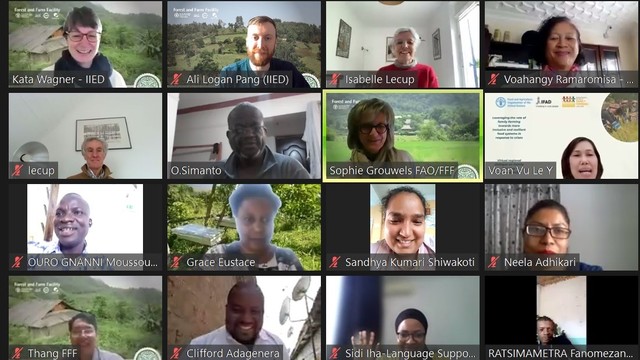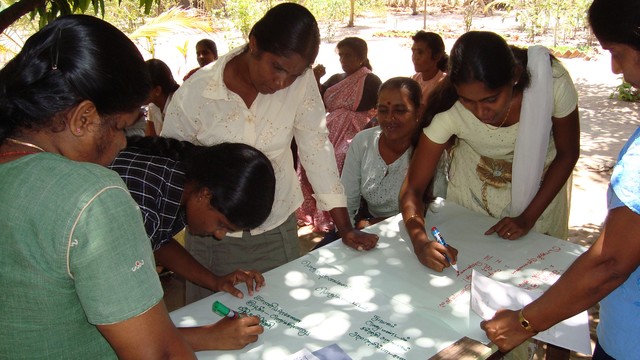Supporting small-scale farmers: rights or markets?
Development support for small-scale farmers must be based on both the enforcement of basic human rights and a pro-poor development of markets. This was the conclusion of a seminar Rights-based versus market-based development: a false dichotomy for small-scale farmers? held in Stockholm, Sweden last week.
Development support for small-scale farmers must be based on both the enforcement of basic human rights and a pro-poor development of markets. This was the conclusion of a seminar Rights-based versus market-based development: a false dichotomy for small-scale farmers? held in Stockholm, Sweden last week.
The seminar, part of a series of ‘provocations’ initiated by IIED and Hivos and hosted by The Swedish International Agriclture network Initiative (SIANI), The Swedish Cooperative Centre (SCC) and the Swedish International Development-cooperation Agency (Sida), was attended by 90 policymakers, academics and practitioners working at the interface between small-scale production, markets and development.
A quick show of hands at the seminar’s start suggested that almost all the participants believed that development approaches for small-scale farmers should be based on human rights first, and markets second.
Rights alone are not enough
There are many reasons why development policy should focus on the most vulnerable, clearly define their entitlements (as well as the dutyholders of those entitlements) and emphasise non-discrimination. “Rebalancing food systems so they can work more equitably is absolutely key to combating hunger in the world today”, said Olivier de Schutter, UN special rapporteur on the right to food.
The extreme poverty of small-scale food producers — 500 million farmers, fishers and herders are food insecure — is caused not by a lack of economic growth but by unequal power relations, according to Ngolia Kimanzu of the Swedish Cooperative Centre. “You can only address that with a rights-based approach to development,” he said.
But if the room was behind Kimanzu’s thinking, it was soon clear that emphasising rights alone is not enough to lift small-scale farmers out of poverty.
In practice, rights-based policies are difficult to implement and generally do not avoid problems of power and embedded advantage. “Many low income groups…would not trust the courts or the legal system to deliver for them and would feel excluded from that sort of discourse”, explained IIED researcher Diana Mitlin. “Court outcomes often clearly favour the most powerful social groups,” she added.
Rights-based approaches present a simplistic package of measures to tackle what are very diverse and complex problems on the ground. And they are not easily separated from markets — markets depend on rights and the way in which rights are constituted has profound implications for the way in which markets function, said Mitlin.
And let’s not forget the proven power of markets. One participant from Sweden’s Ministry of Foreign Affairs provided a reminder of just how much we already owe to market-led development: “Before we chuck out standard market-based approaches… can I remind people that the big story of development over the past three decades is that millions of entrepreneurs in Asia have lifted hundreds of millions of people out of poverty and, in the process, put a number of countries on course to achieving the first Millennium Development Goal”.
Combinations in practice
Instead of opting for rights or markets, it seems we need both. But how do we blend the two in practice? There was no shortage of examples in the room.
Many were based on governments tilting markets so that they favour small-scale farmers. André Gonçalves, from the Centro Ecologico in Brazil, talked about the Brazilian Food Acquisition Programme, where the government buys products directly from smallholders and distributes them to a network of daycare centres, hospitals and other food insecure groups. Gonçalves also described Brazilian legislation, brought in in 2009, to guarantee at least one-third of the annual budget from the National Programme of Schools Meals — around US$500 million — to be used in buying food from family farmers.
Brazil is not alone in focusing on school meal programmes to support smallholders. “There are many examples of countries that have built entire industries on these types of initiatives,” said Katarina Eriksson, from the Tetra Laval group. “Thailand, for example, has built its whole dairy industry on school milk and Iran is doing the same thing”.
Other examples were based, not on state procurement, but on supporting organizations to integrate smallholders into industrial value chains. “We support [efforts] to build systems whereby you can treat a lot of small farmers as a larger entity,” said Eriksson. This includes working with ‘dairy hubs’ in developing countries to link small dairy herders to global value chains.
Kimanzu echoed the need to support producer organizations as the most effective way of giving farmers a voice in markets. He talked about a programme in Costa Rica run by nongovernmental organization Sedeco that, by supporting an organic farmers association, has enabled small-scale farmers to compete with big multinationals such as Monsanto and penetrate the country’s organic production sector.
Kimanzu’s comments seemed to strike a chord. Indeed, when asked by Lasse Krantz from Sida what the implications of a right-based approach to market development would be for donors, all the speakers stressed the importance of supporting grassroots farmers’ organisations as the best way to give farmers a stronger voice and more bargaining power in policy negotiations.
Rights-based and market-based approaches to development for small-scale farmers may be promoted separately in theory but, as the breadth of examples showed, they are often more effective when taken together. The overwhelming message from last week’s seminar is that it is a false dichotomy.
The Provocation seminar series:



